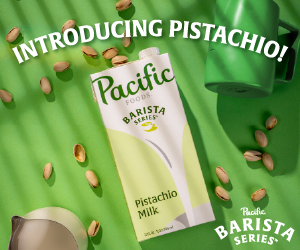Last year, the Rose Establishment received an intriguing but daunting proposal: create a five-day pop-up version of the Rose during the 2016 Sundance Film Festival. By way of several Los Angeles production and event coordinating companies, the electronics company Samsung would house a café inside their event space, built out for us.
Our business colleagues had done similar pop-ups at Sundance years prior, and they told us how unimaginably busy it could get, so we knew we had to prepare for a much higher volume than we were used to. Our pop-up would be very different, though. Samsung didn’t want us just for our coffee—they wanted our breakfast and lunch offerings, too.

We’ve done small booths at local festivals, but nothing like this. My job was to design a functional espresso bar and workspace, plan a feasible drinks program, and determine how to serve really good drinks to an absurd amount of people.
Keeping Cool While Going Fast
Ultimately, we did it: the Sundance pop-up was a success, and nobody died. Even better, we didn’t run out of coffee or milk. It was physically and mentally taxing but a rewarding learning experience.
Below are three things I recommend should a multinational conglomerate hire your café to operate a pop-up at a highly attended festival (or if you just get unexpectedly busy overnight).
One: Batch It
When receiving the pop-up proposal, I first thought was, “We’re doing drip coffee.” At the Rose, we brew our house coffee in a slew of fifty-one-ounce french presses, which we serve immediately or decant into an airpot. We also brew coffees to order via AeroPress and Clever Dripper, but for this unprecedented high-volume scenario, I knew that a dual station 1.5 gallon Fetco brewer was the way to go.
Gabe Jessop from Keep It Brewing (our local equipment tech) set us up with one and dialed in a matching Fetco portion-controlled grinder so we wouldn’t have to weigh out every dose for every batch.
In addition to drip coffee, a trio of teas, and espresso drinks, we served a tea latte called the Black Rose. It’s a rose-scented black tea brewed double-strength with rose petals, sweetened with an anise and black peppercorn syrup, spiced up with Scrappy’s Orleans bitters, and topped with steamed milk. Instead of brewing and building them all to order, I made the Black Rose in nine-liter batches, bitters and all, and bottled it.
This turned a four-minute drink build into a thirty-second drink: I simply put equal parts milk and tea concentrate into a pitcher, steamed, and poured.

With batch-brewed coffee and tea, it’s not just about speed and convenience, either. Consistency and accuracy can easily waver in a high-stress café with a line to the door for most of the day—for five days in a row. I can only imagine how many AeroPresses I would have exploded or Black Roses I would have made sans syrup if it wasn’t all made with precise proportions in advance. Speed, precision, and consistency add up to a quality drink and a positive customer experience.
Two: Overcommunicate
At the Rose, we use two tickets per order—one at the bar for drinks and one in the kitchen for food, so the cooks and baristas read their own order tickets. At the pop-up, we all had to share one ticket per order, so verbal communication was vital.
We staffed the pop-up with four people in specific roles. The cashier would immediately serve any grab-and-go food items for the customer, read their order back to them, then pass the ticket to the barista. The barista would call out any brewed coffees or teas needed while continuously pulling shots and steaming on the left side of the espresso machine. I, as a floater, would grab brewed coffees and teas, relay toast or porridge orders to the cook, and assist the barista.
If the cashier, barista, or cook were in a better position than me to get a brewed coffee or tea, they would verbalize it, and I’d confirm it. When handing finished drinks to customers with a mixed food and drink order, I would still ask them if they had received their grab-and-go food to avoid any missed orders.
Although the four of us all had our specific roles and responsibilities, we made sure each of us knew about everything going on, and we didn’t hesitate to delegate when in a pinch. We had initially planned to switch roles every day, but we got into a comfortable groove. If it was chaos across the bar, we were a well-caffeinated machine behind it. Because we stayed in constant communication, we kept screw-ups to a minimum and wait times low while still making great food and drinks.
I could fill fifty pages with what I learned from Sundance, but batching and overcommunicating is what saved us. Oh, there was still number three: eat sandwiches, lots and lots of sandwiches. At even the hint of a lull, scarfing a sandwich kept our energy and moods up.
It also helps when you work alongside people you genuinely like, especially if you’re stuck together twelve hours a day for a week. If you ever find yourself in a similar high-volume situation, my best advice is the mantra we coined at some point during the pop-up week: Stay calm. Don’t freak out. It’s just coffee.
—Cody Kirkland is the manager of the Rose Establishment in Salt Lake City.
This article was originally published on March 10, 2016 and has been updated to reflect Fresh Cup’s current editorial standards.















